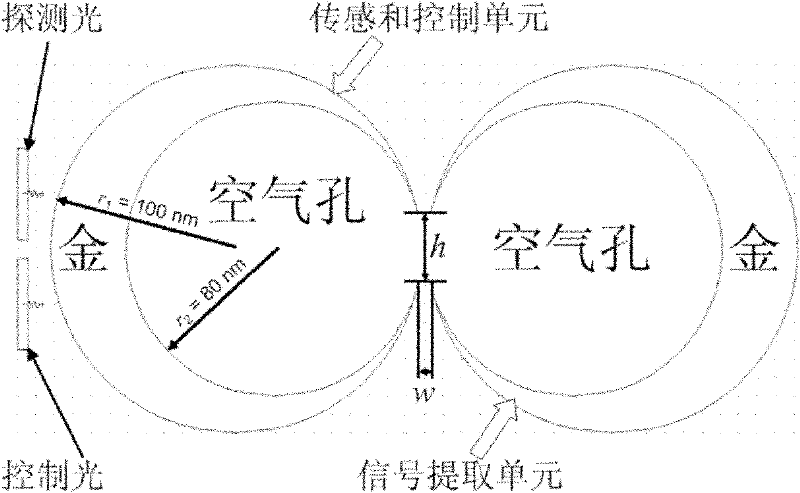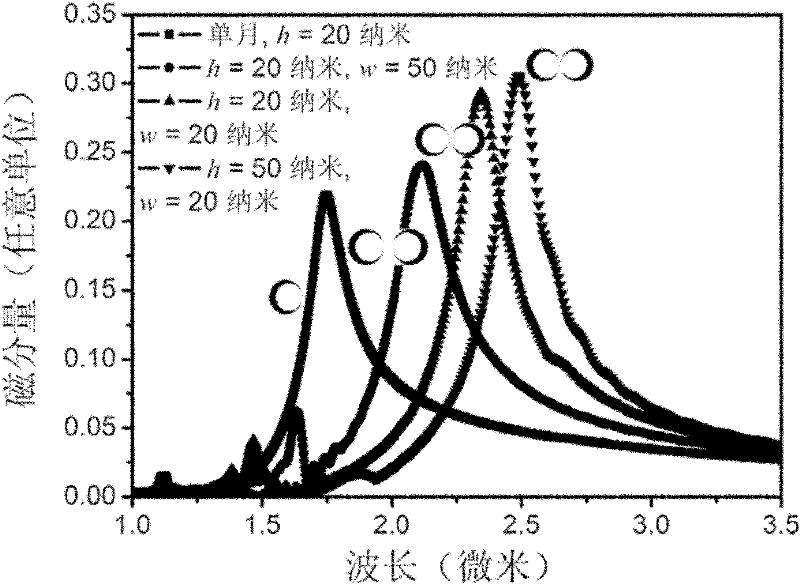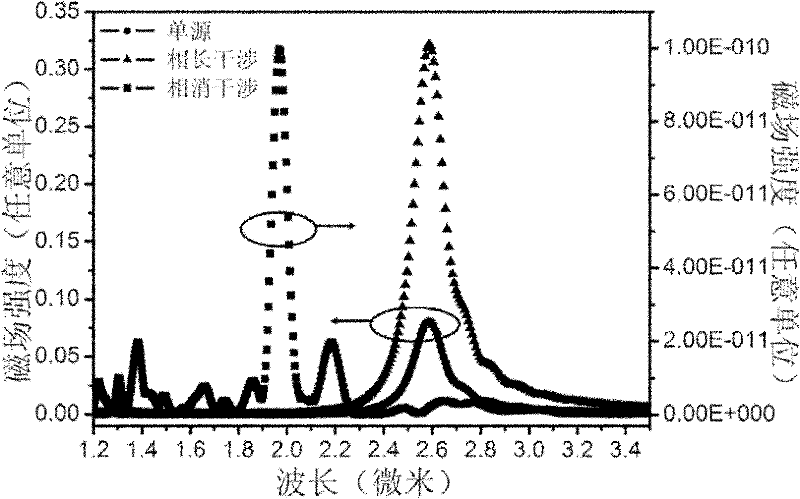Chemical sensing system with double-crescent pair structure
A chemical sensing and crescent technology, applied in the field of chemical sensing systems, can solve problems such as unfavorable detection and restricting the range of motion of scanning probes, and meet the requirements of reducing scanning detection accuracy, light source size and collimation requirements, The effect of high sensor sensitivity
- Summary
- Abstract
- Description
- Claims
- Application Information
AI Technical Summary
Problems solved by technology
Method used
Image
Examples
Embodiment 1
[0039] In an exemplary embodiment of the present invention, a chemical sensing system based on a surface plasmon resonance double crescent pair structure is disclosed. The chemical sensing system includes: adjacent first crescent-shaped nanopillars and second crescent-shaped nanopillars. The first crescent-shaped nanocolumn contains a first cavity, the second crescent-shaped gold nanocolumn contains a second cavity, and openings of the first cavity and the second cavity are opposite. The first cavity is used to accommodate the detection medium, and the second cavity is used to provide the detection position of the scanning probe.
[0040]In this embodiment, the change in the refractive index of the detection medium in the first cavity causes the surface plasmon wavelength at the interface between the first crescent-shaped nanopillar and the second crescent-shaped nanopillar to shift, so that the local The surface plasmon resonance wavelength shifts accordingly, resulting in a...
Embodiment 2
[0044] On the basis of the first embodiment, the present invention provides a preferred embodiment.
[0045] In this preferred embodiment chemical sensing system, the first crescent-shaped nanopillar and the second crescent-shaped nanopillar are cylindrical, and the first cavity and the second cavity are cylindrical . The first and second crescent-shaped nanopillars may have the same or substantially the same diameter; the first and second cavities may have the same or substantially the same diameter. Preferably, the diameters of the first crescent-shaped nanocolumn and the second crescent-shaped nanocolumn are the same; the diameters of the first cavity and the second cavity are the same, and the first cavity and the second cavity are about two The dividing line is mirror-symmetrical.
[0046] In this preferred embodiment, the ratio of the diameter of the first crescent nanopillar to the diameter of the first cavity is 5:4. The ratio of the vertical distance between the op...
Embodiment 3
[0049] On the basis of the first embodiment, the present invention also provides a preferred embodiment. In this preferred embodiment, the chemical sensing system further includes: a detection light source for generating detection laser light. The detection laser is incident along the normal direction of the sidewall of the first crescent-shaped nanocolumn from the area outside the first cavity and the second cavity to excite the surface of the first crescent-shaped nanocolumn plasma wave.
[0050] In the prior art, there are photothermal effects, photodynamic effects, and other nonlinear effects in the interaction between the detection light and the detected molecules, which will affect the local refractive index of the detection medium, so that it cannot truly reflect the refractive index of the detection medium. In this embodiment, however, the crescent structure is excited outside the cavity, which completely avoids the interaction between the probe light and the probed m...
PUM
| Property | Measurement | Unit |
|---|---|---|
| diameter | aaaaa | aaaaa |
| diameter | aaaaa | aaaaa |
| refractive index | aaaaa | aaaaa |
Abstract
Description
Claims
Application Information
 Login to View More
Login to View More - Generate Ideas
- Intellectual Property
- Life Sciences
- Materials
- Tech Scout
- Unparalleled Data Quality
- Higher Quality Content
- 60% Fewer Hallucinations
Browse by: Latest US Patents, China's latest patents, Technical Efficacy Thesaurus, Application Domain, Technology Topic, Popular Technical Reports.
© 2025 PatSnap. All rights reserved.Legal|Privacy policy|Modern Slavery Act Transparency Statement|Sitemap|About US| Contact US: help@patsnap.com



